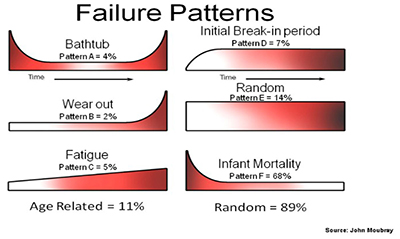As Published by Uptime Magazine December/ January 2017 issue
Do No Harm: The Hippocratic Oath Applied to Reliability
The Greek physician Hippocrates (c.460 BC – c.370 BC) is credited with an oath that was meant to provide certain ethical standards a physician was to uphold. While maintenance is not of the magnitude as being a doctor, organizations would do well to apply portions of the Hippocratic oath to their maintenance practices. Two such examples are: “…to teach them this Art, if they shall wish to learn it, without fee or stipulation; and that by precept, lecture, and every other mode of instruction, I will impart a knowledge of the Art to my own sons, and those of my teachers, and to disciples…” and “I will follow that system of regimen which, according to my ability and judgment … and abstain from whatever is deleterious and mischievous.” This article focuses on the latter, “and abstain from whatever is deleterious and mischievous,” or in 21st century vernacular: Do no harm.”
Maintenance reliability professionals have a responsibility to their superiors to deliver results that improve the bottom line via increased uptime and productivity. But they also have a responsibility to those technicians who are expected to assist them in the process of increasing asset uptime and improving reliability. Regardless of your certification or the acronym attached to your signature block, without the technician’s solid understanding and performance of the basics, you will not achieve either goal. Two key ingredients of any reliability effort are precision installation and maintenance practices. Without them, you will find yourself replacing the same motors, pumps, etc., repeatedly.
From the reliability-centered maintenance (RCM) teachings of Stanley Nowlan and Howard F. Heap, both engineers at United Airlines, and John Moubray, the originator of RCM2, it is learned that there are six distinct failure curves. Furthermore, as many as 68 percent of failures can be attributed to infant mortality or failure induced at start-up/installation.

Read the full article to learn how precision installation and maintenance practices are two key ingredients of any reliability effort.
Filed under:
Articles and Case Studies, Reliability by Ana Maria Delgado, CRL
